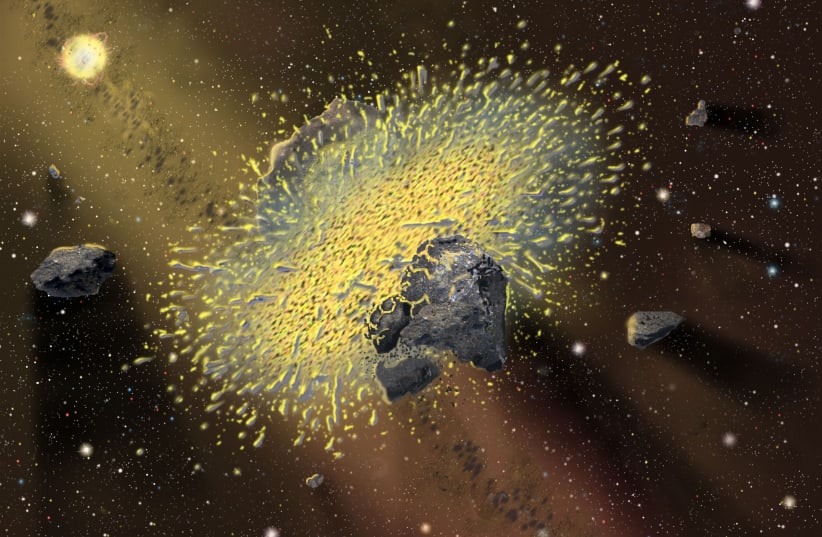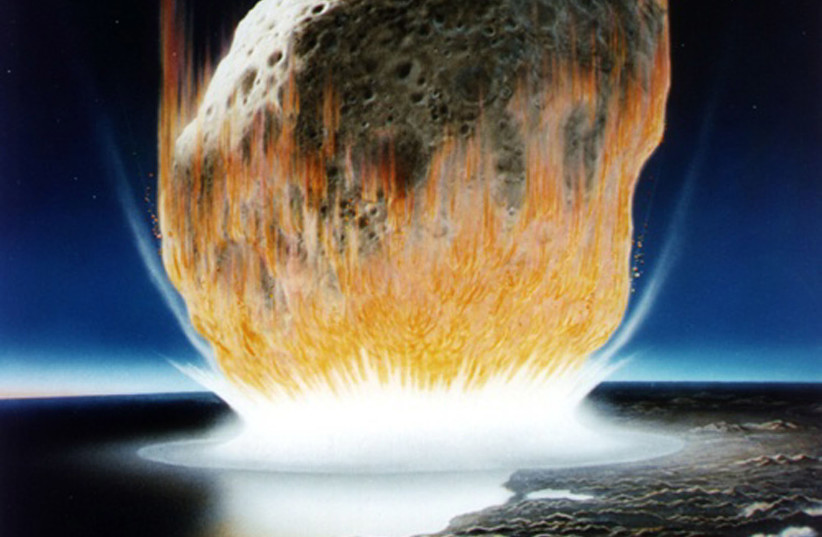Asteroid impacts are one of the most dangerous possible natural disasters, as humanity currently lacks a reliable means of defense against them. One possible solution, using nuclear weapons or similarly destructive means, is something commonly seen in science fiction movies, but is frowned upon by many scientists due to the possibility of fragments of the asteroid causing significant damage.
But according to new research, this may not be as damaging as previously thought.
The study, published in the academic journal Acta Astronautica and led by Patrick King of John Hopkins University Applied Physics Laboratory, sought to study the fragments of an asteroid destroyed by a nuclear missile or another similarly destructive object.
The study utilized a simulation program called Spheral, which is designed to track the fragments of an asteroid destroyed by such a process, which is known as asteroid disruption.
The simulation in question used the model of a one-megaton nuclear bomb detonating on the surface of an asteroid measuring 100 meters long and accounted for several possible different orbits, the sun, and the gravity by other large objects in space. It was also assumed that the asteroid was hit with the bomb several months ahead of its planned impact against the planet.
The simulations presented the researchers with some promising results. In some, well over 99% of the fragments missed the Earth after the asteroid itself was destroyed.
This alleviates one of the main worries regarding disruption: the damage caused by fragments.
“Simply stated, for a 100-meter object that’s projected to hit Earth, if we employ a robust nuclear disruption technique by at least one month before impact, we can prevent 99% or more of the impacting mass from hitting the Earth,” King told the news outlet Gizmodo.
The one-month aspect is considerably important, too. In an exercise earlier this year, NASA's Jet Propulsion Laboratory's Center for Near-Earth Object Studies ran its biannual impact simulation, this time focusing on a fictional asteroid 2021 PDC that was just discovered ahead of a planned impact with the planet that was just six months away, and the participants were forced to find some kind of solution to the impact.
Due to the danger of asteroid impacts, scientists at NASA and other agencies worldwide have studied and cataloged all Near-Earth Objects (NEOs) such as these asteroids, some of which edge close to the planet and are thus labeled Potentially Hazardous Asteroids (PHAs). Because many of these are spotted from far away, it seems unlikely that months would go by before humanity notices an incoming asteroid, but the possibility remains, especially since many aspects are difficult to fully predict. And even a small one could do considerable damage.
For comparison, the last known significant asteroid impact was on February 15, 2013, when an asteroid exploded in the air above Chelyabinsk, Russia. This asteroid was just 17 meters wide, and while it didn't result in any casualties, the shock wave from the explosion shattered windows in six different Russian cities and caused 1,500 people to need medical attention.
One method for possibly stopping the impact of an asteroid is through the use of deflection, which would mean launching something to slightly alter an asteroid's path. The most prominent of these efforts is the Double Asteroid Redirection Test (DART) Mission, set to be launched in November and the result of efforts by NASA and the Applied Physics Laboratory.
In layman's terms, it means punching an asteroid with a rocket with enough speed to change its direction by a fraction of a percent.
However, this method does have its flaws, most notably timing. The spacecraft used in the DART Mission has taken a considerably long amount of time and resources to develop and launch. In case of an asteroid impact that seems so sudden, that kind of time could be a luxury the planet can't afford.
Another method proposed in July 2021 by the Airbus company suggested an alternative, repurposing TV satellites by essentially hijacking them and using them as an ad hoc means of deflecting the asteroid.
The science behind this method seems sound, though it does have its flaws too, such as being able to deflect the asteroid when it's far enough away from the planet. That could hypothetically mean over six months away.
Disruption, by contrast, could be done on much shorter notice. It, too, though, has its setbacks.
“By making several fragments instead of one single impactor, it is possible that we multiply the threat,” King told Gizmodo. “On the other hand, disruption has its own advantages, and disruption could succeed where a deflection might not. This is all part of the process of evaluating what technique to use.”
However, it could at the very least minimize what was once a cataclysmic threat capable of wiping out cities or worse to a more minor scenario. As such, the study notes that “We find that disruption can be a very effective planetary defense strategy even for very late... interventions, and should be considered an effective backup strategy should preferred methods, which require long warning times, fail.”
Even in the case of just stopping an asteroid that was a month away, however, that could still not be enough time in some scenarios.
NASA has estimated that the Earth is at no risk of being impacted by an asteroid within the next 100 years, but this notably only applies to asteroids coming from the "front," meaning towards Earth and the Sun. Asteroids coming from the "back," towards Earth away from the Sun, are still notoriously difficult to detect.
On September 16, asteroid 2021 SG, ranging between 42 meters and 94 meters in size, flew past the Earth, and scientists never even knew it existed, let alone was flying past the planet, until the next day.
This may be much smaller in size than the doomsday-sized asteroid in the simulation, but it was far larger than the asteroid that exploded above Chelyabinsk, and thus could still have caused the damage had it impacted.

